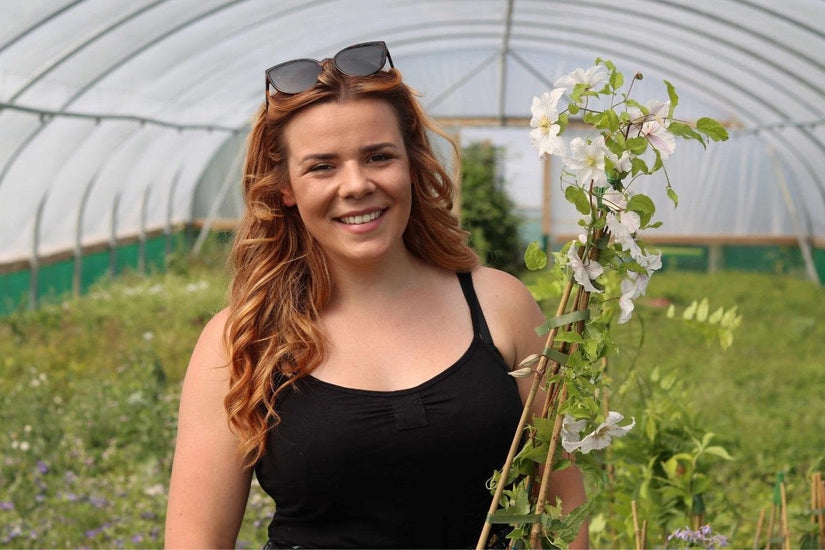Jasmine Plants
A strong contender for the defining scent of summer, jasmines are hardy and highly fragrant climbers that bloom in summer or winter, with plentiful clusters of white or yellow flowers to attract those all important pollinators. Perfect for a pergola or to add a fragrant element to your seating area.
Need help picking?Sort and filter
Cheltenham
Meet Mollie
Climbers grown by specialists at the height of their game
What does it take to grow the strongest and best climbing plants in the show tent? Organic fertilisers, natural pest control and years of dedication from Mollie, our expert grower in Worcestershire. Professionally pruned and checked by hand, they’re guaranteed to put on a gold standard display in your garden, too.
Need help picking?
Jasmine FAQs
What kind of jasmine should I grow?
The main difference between jasmines is their flowering time. Most flower during the summer, including the popular Jasminum polyanthum (Pink Jasmine), and Jasminum officinale (Common Jasmine), but for a bit of much needed winter colour, bright yellow Jasminum nudiflorum (Winter Jasmine) is hard to beat. Many jasmines are also evergreen, giving you year-round interest.
Where should I plant jasmine?
Jasmine does best in a sunny, sheltered position with plenty of natural light, but will also grow well with a little partial shade. If it’s a winter flowering variety, these can deal with a bit more shade and cold. Provided it drains well and doesn’t get waterlogged, any soil type is fine. As it’s a very fragrant plant, jasmine is a good choice for planting on a pergola or arch, or near seating areas and paths.
How do I plant jasmine?
Dig a hole twice as wide and deep as your jasmine’s roots, position your plant in the centre and backfill with compost or soil, firming in well. The top of the rootball should be at soil level. Water your plant well and tie it in to the support with plant ties. If you’re planting more than one jasmine, the plants should be spaced according to the level of cover you want. Space them roughly a metre apart, or for a denser level of cover, 45-50cm.
How often should I water jasmine?
Water your jasmine plant regularly for the first year - after this plants in the ground should be fine with rainwater unless the weather is very hot or dry, but plants in pots should continue to be watered regularly.
Do jasmine plants need fertiliser?
Feeding your jasmine plant can help it achieve its full flowering potential. Apply a general purpose slow release fertiliser annually in the spring, then feed your plant with high potassium fertiliser monthly throughout spring and summer - tomato feed is good!
How do I prune jasmine?
Prune your jasmine plant every year after flowering to keep it in shape and remove any dead or damaged branches. Pinch back the tips of the vines regularly to encourage bushier growth and more flowers.
How do I support jasmine vines?
Jasmine is a twining climber and will wind itself around any structure. Good supports for jasmine include obelisks, arches and pergolas. It will also cover a wall or fence with support from horizontal wires or a trellis. It won’t need much training once it’s established. All you need to do is to guide the young plant by tying in its stems until it’s grown enough to do this for itself.
When do jasmine plants bloom?
Most jasmine plants are summer blooming and will be in flower typically throughout June and July. Others, such as Jasmine polyanthum, bloom in spring from March to April or from January to March like Jasmine nudiflorum.
Will jasmine grow in a pot?
Jasmine plants don’t have especially deep roots, so they thrive in pots. Plant them at the base of a pergola or trellis and train them upwards with wires or twine. A freestanding obelisk or trellis placed in the pot also works well and is better if you want to move the pot at any time.








